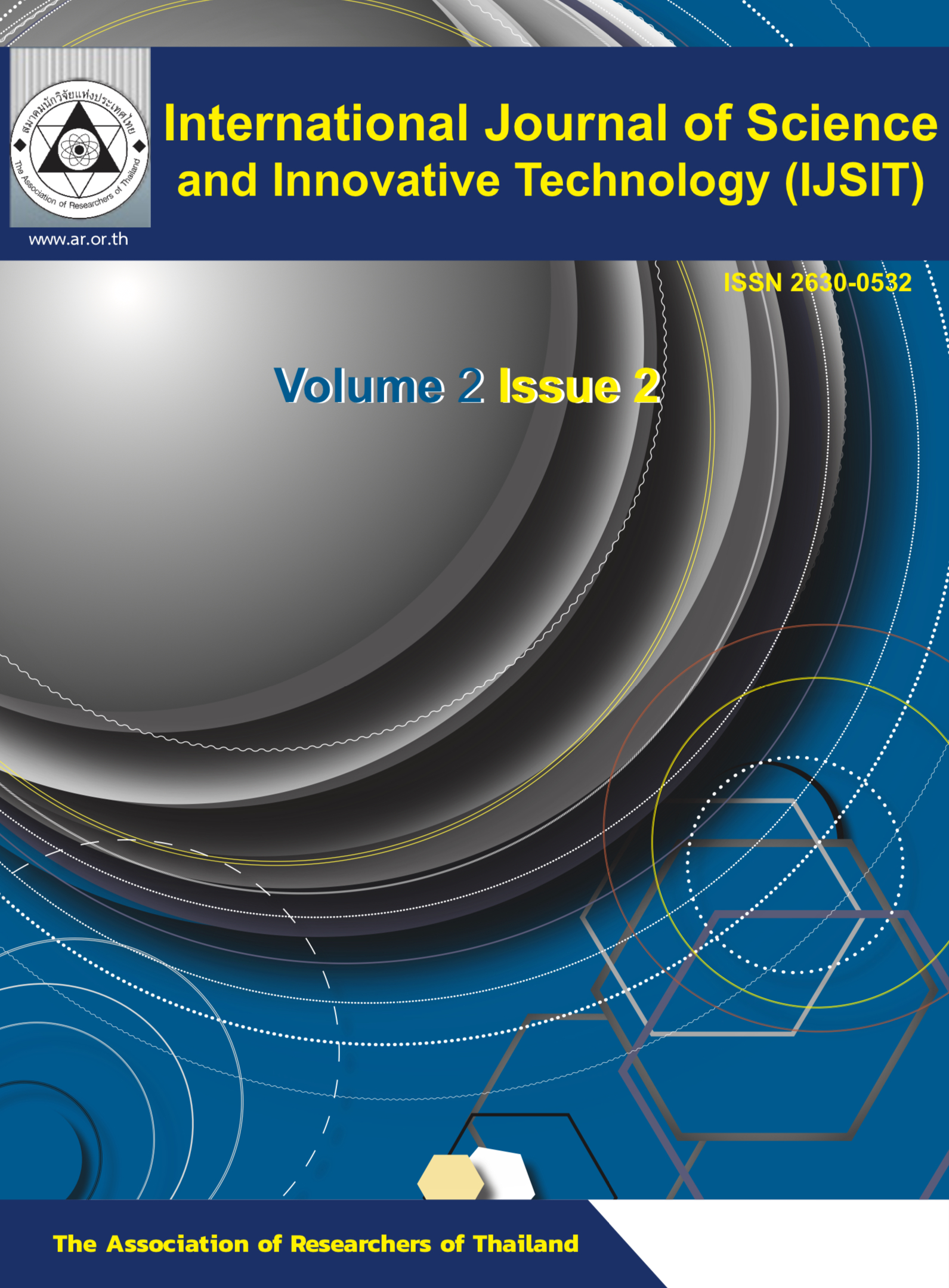Evaluation of Heavy Metals and Hazardous Substances in Polylactic Acid for Agricultural Applications
Main Article Content
Abstract
The analysis of the content of heavy metals and hazardous substances in polylactic acid (PLA) biodegradable plastics is an approach to assess for agricultural applications such as plastic mulch. Most plastic mulch products are produced from polyethylene plastic (Polyethylene; PE) that decomposes slowly and causes environmental problems. According to the PLA study that has been tested according to the requirements of the ISO 17088: 2012 standard, the disintegration test between the complete fermentation according to ISO 16929: 2013 (100 percent) and the assessment of the impact of compost on plants according to OECD 208 together with EN 13432 Annex E, the test results reveal that the compost obtained from disintegration test during fermentation does not negatively affect the ability of the compost to plants grow. The results of PLA analysis using the Inductively Coupled Plasma-Optical Emission Spectrometer (ICP-OES) find selenium for 0.05, zinc for 0.43 lead for 0.12, cadmium for less than 0.20, nickel less than for 0.50, chromium for less than 0.50 and copper for less than 0.50 milligrams per kilogram. And selenium, nickel, chromium, and copper found provide the same amount as those found in PE. The results of the analysis for the content of heavy metals and harmful residues in the planting areas of Ratchaburi and Pathum Thani provinces, reveal that there are selenium, zinc, lead, nickel, chromium, copper accumulated in the soil at a quantity about 6-600 times higher than those in PLA, but not exceeding the standard criteria of soil quality used for housing and agriculture. Therefore, it is possible to utilize PLA to produce plastic film covering the soil for environmental friendliness.
Article Details
References
Ashraf, M.A., M.J. Maahand and I. Yusoff. 2011. Heavy metals accumulation in plants growing in ex tin mining catchment. Int. J. Environ. Sci. Tech. 8 (2): 401-416.
Environmental Research and Training Center. 2014. Affected by landfill fire, Phraekkasa subdistrict, Samutprakan Province. Department of Environmental Quality, Ministry of Natural Resources and Environment. (in Thai)
Guan, B.T.H., M.Y. Ferdaus, N. Halimoon and Y. Christina Seok Yien. 2017. Uptake of Mn and Cd by wild water spinach and their bioaccumulation and translocation factors. Environment Asia. 10 (1): 45-51.
Kasassi A., P. Rakimbei, A. Karagiannidis, et al. 2008. Soil contamination by heavy metals: Measurements from a closed unlined landfill. Bioresour. Technol. 99 (18): 8578-8584.
Keepax, R. E., L.N. Moyes, F.R. Livens. 2011. Speciation of heavy metals and radioisotopes. Env. and Ecol. Chem. 2: 165-199.
Khala, P. 1998. Potential of Petchaburi river for heavy metal absorption in overflow wastewater from Phetchaburi municipal wastewater treatment system. MS Thesis, Kasetsart University, Bangkok. (in Thai)
Manahan, S. E. 1992. Toxicological chemistry. 2nd ed. USA, Lewis Publishers, INC.
Pollution Control Department. 2019. Thailand pollution report. Ministry of Natural Resources and Environment. (in Thai)
Utapan, S., N. Laemun, P. Paopongsawan, et al. 2013. A study of environmental contamination from hazardous waste and the community management. Disease Control Journal. 39 (3): 258-265. (in Thai)


